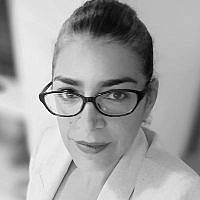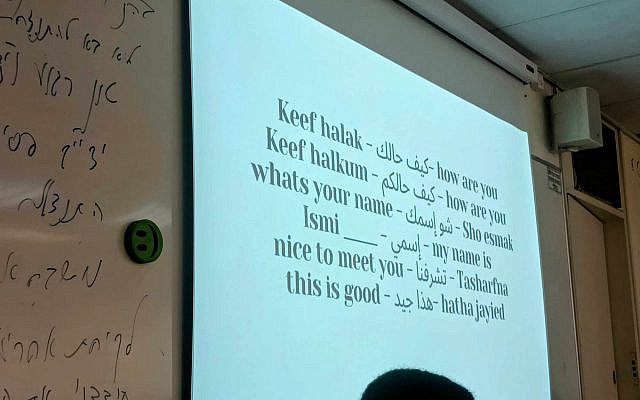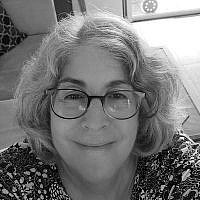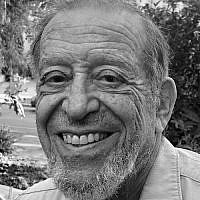From darkness to dialogue: How one classroom rose above October 7th
The Fall academic semester finally began in January 2024, after being postponed indefinitely due to the nationwide military draft which affected both students and teachers alike. The scars of the October 7, 2023 invasion by Hamas were still fresh, leaving Israel reeling from the devastation wrought by terror and war. It was against this backdrop of tragedy and upheaval, during one of the darkest hours in Israel’s history, that a course at Bar-Ilan University named “Jewish-Arab Interreligious Dialogue” emerged as a beacon of hope amidst the chaos of conflict.
My decision to enroll in the course and embark on this journey was made long before the October 7th attacks. With tensions, racism, and fear running high, and the wounds of ongoing war still raw, the prospect of engaging in dialogue with those perceived as adversaries suddenly felt daunting yet necessary. But as I exchanged emails with Dr. Ben Mollov, the course instructor, I felt a glimmer of optimism and anticipation amidst the darkness. It became clear to me that if ever there was a time for Jewish-Arab interreligious dialogue, it was now, and I was ready.
As I stepped into the classroom on the first day of the semester, I was met with a startling realization: the vast majority of my classmates were Muslim students. This striking imbalance, I soon learned, was not unique to this semester nor to the recent attacks, but a recurring pattern that happens every year with this elective course and others like it. That, in and of itself, spoke volumes to me about the state of affairs in Israel, highlighting the reluctance of many within my own Jewish community to engage in dialogue and reconciliation. This revelation left me feeling embarrassed of my so-called “chosen” people, forcing me to confront the hypocrisy of our purported commitment to peace. It was a humbling reminder of the work that lay ahead and the entrenched divisions that still needed to be bridged.

From the outset, it was clear that my motivations for taking the course differed from those of my peers. While many expressed a deep connection to their religious faiths, I found myself standing on the periphery, a skeptic in a sea of believers. Religion, in my experience, was often a source of division rather than unity, doing more harm than good—a sentiment I did not hesitate to voice from the very first day. Despite my reservations, however, I approached each lesson with an open mind and a willingness to engage with the material. I couldn’t relate to many aspects of my own religion, in fact, I didn’t really know too much about it, but I was genuinely interested in discovering more about myself and the people around me.
Throughout the semester, under the guidance of Dr. Mollov, we embarked on a journey of exploration, delving into the histories, traditions, and beliefs of both Judaism and Islam. As the weeks progressed, my perspective began to shift. Through discussions on Jewish and Muslim holidays, prayer rituals, the roles of women and family, and concepts such as charity and modesty, I gained a newfound appreciation for the topics. Not just for the richness and diversity of religious expression, but also for the many commonalities we shared. I quickly found myself drawn into fascinating conversations that challenged my preconceived notions and forced me to confront my own biases and assumptions.
One of the more memorable experiences of the semester came during a special workshop titled “Music as a Bridge” led by Prof. Avi Gilboa at the Department of Music at Bar-Ilan University. Amidst a pile of percussion instruments, I found solace in the rhythmic beat of a djembe drum—a powerful symbol of unity amidst diversity. Through the rhythms and harmonious melodies of our interfaith drum circle, I reached a new level of connection with my classmates. As we improvised together, each beat served as a testament to the power of music for transcending cultural and religious divides.
In that moment, the beauty of collaboration, harmony, and laughter stood in stark contrast to the hatred and fearmongering festering outside our classroom walls, where the world continued to grapple with the fallout of October 7th. When asked to share our thoughts and experiences about the workshop, one of the Muslim students expressed it best. He said, “I found out that each one of us is an instrument. Why? Because if you look at the instruments, each one of them has a different shape, color, even sound. But if in some way we can combine them together we can make beautiful sounds, and that’s what happened in our group.”
I remember sending this quote and pictures from the music workshop to my family’s WhatsApp group, only to get somewhat cynical comments like, “Nice, if only more Arabs would feel this way.” I explained to them that it was the opposite: that year after year there are not enough Jewish students interested in signing up for this course, but they simply didn’t reply anymore after that. It was a glaring reflection of the deep-seated divisions and misconceptions that plagued our society at the time.
Other pivotal moments occurred during visits to a synagogue on campus and a field trip to a mosque in Kfar Qasim, where we bore witness to the beauty of religious practice and ritual. As we stepped foot into each other’s sacred spaces for the very first time, we looked around as if tourists in a new land, taking in the scenery and experience. There, we also had the opportunity to speak to a rabbi and a sheikh and ask questions about each other’s religions. I remember covering my hair and removing my shoes before entering the mosque. It was so out of character for me that I didn’t even feel like myself, but at the same time, a sense of reverence and humility washed over me. In these holy sites, the barriers between us were replaced by a shared reverence for something greater than ourselves.
As the semester drew to a close, I found myself embracing an increased sense of purpose and conviction. Through our shared experiences and conversations, I came to realize that true reconciliation begins with a willingness to listen and learn from one another, to embrace the humanity that binds us together. Despite the divisive media headlines and rhetoric of the Israel-Gaza war, a brighter future seemed possible nonetheless. Though I still didn’t hold strong beliefs in religion, I enjoyed learning about both worlds, especially my own, and I felt a closer connection to my roots. Of course, the more I learned, the more questions I had, and unfortunately, I often did not get the answers I was seeking. But perhaps, that’s the beauty of the journey—finding wisdom in the questioning, rather than in the certainty.
In the end, the Jewish-Arab Interreligious Dialogue course was more than an academic endeavor; it was a journey of self-discovery and transformation. While it did not offer easy solutions to the complex issues facing Jewish and Arab communities, it provided a safe space for dialogue and empathy that was sorely needed in a time of heightened tensions and division. As I look towards the future, I am inspired to continue the work of building bridges between communities and fostering a culture of understanding. In a world too often torn apart by fear and hatred, the ability to sit down with one another as real people—to laugh, to share, to listen—is ultimately a profound act of resistance.
















